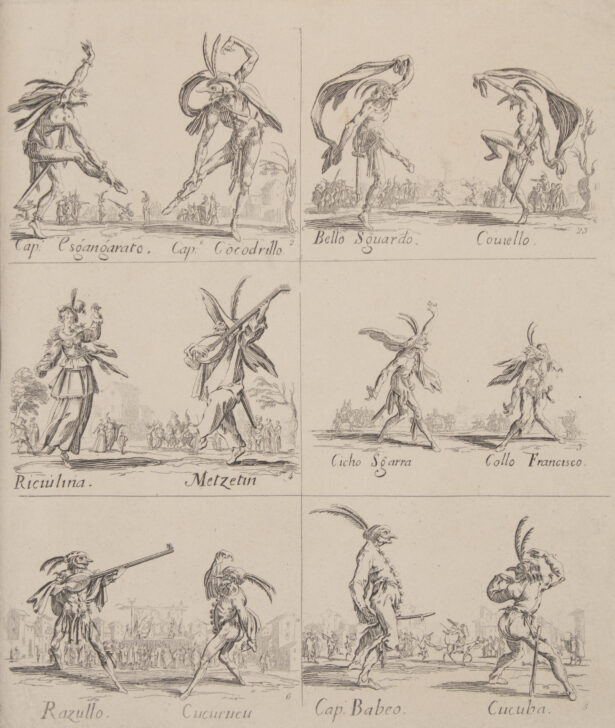Six Scenes from the Balli di Sfessania (Dance of Sfessania)
Jacques Callot

Description
Jacques Callot
France, 1592–1635
Six scenes from the Balli di Sfessania (Dance of Sfessania)
ca. 1622
Etching and engraving on laid paper
Gift of Professor Walter M. and Nesta R. Spink, 2013/2.557
Subject Matter:
This print is one of a series of 24 etchings that depict the Balli di Sfessania, an imaginative rendering of dancers performing the moresca, a dance that symbolizes the battles between Christians and Moors during the Middle Ages—"sfessania" may have been the Neopolitan name for the version of the moresca danced in Malta; many of the words inscribed on these prints are Neapolitan. This print is divided into six separate registers, each of which contains two costumed dancers performing in an outdoor piazza observed by spectators. Although the costumes might suggest they are Commedia dell'arte players, Donald Posner has convincingly argued that they are ordinary fairground performers, and that Callot likely invented most of them—perhaps basing the group on a troupe of performers he observed in Florence or elsewhere. Likewise, the text written underneath each performer may refer to a moment in the dance, rather than a particular named individual. This print, for example, includes a figure in the lower left scene labeled "Cucurucu," Italian for the rooster's cry "cock-a-doodle-doo," indicating a wake-up call.
Physical Description:
Etching depicting six scenes in which two costumed performers dance in response to each other.
Usage Rights:
If you are interested in using an image for a publication, please visit https://umma.umich.edu/request-image/ for more information and to fill out the online Image Rights and Reproductions Request Form.